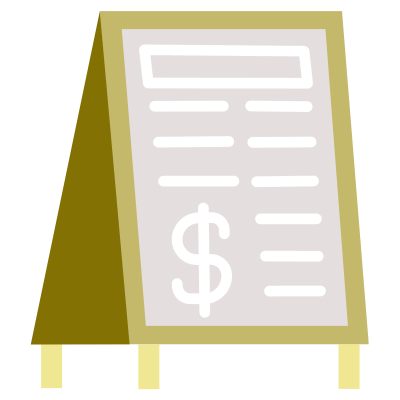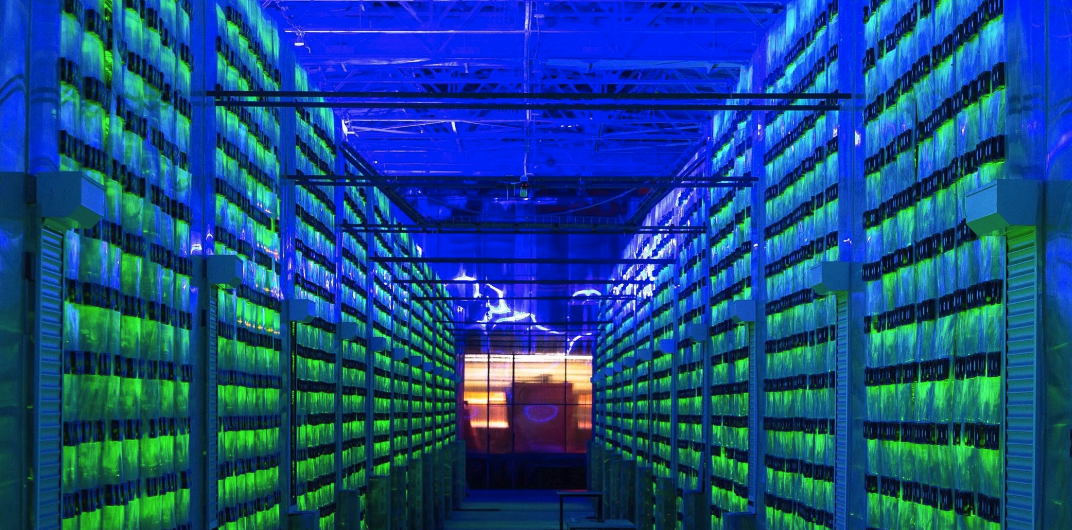NFTs, or non-fungible tokens, gained significant attention in 2021, with sales reaching billions of dollars and attracting celebrities, artists, investors, and finance enthusiasts. However, as the initial hype and speculation have subsided, the NFT industry is now undergoing a period of correction, and our long-term observation positions us to assess the future potential and current status of these digital tokens with a neutral perspective.

What are NFTs?
An NFT, or non-fungible token, represents a unique item that cannot be easily replaced, encompassing digital art, collectibles, videos, music, and similar items. NFTs serve as a means to certify ownership of a wide range of items, including memes, drawings, and digital art.
Despite an initial surge in 2021, NFTs have seen a significant decline, with daily sales volume dropping by 90 percent since January 2022 according to NFT statistics, raising questions about the future of NFTs in the realms of digital art and finance. In this article, we'll delve into the current status of NFTs and explore their future potential, addressing the question of whether NFTs are truly facing dead.
Overview of the NFT Market
Consumer interest in NFTs began to rise in 2017 when Ethereum introduced token standards for developers, enabling them to create and deploy tokens linked to their artwork through smart contracts. Notably, software developers Matt Hall and John Watkinson played a pivotal role in this movement by launching their NFT line and introducing Crypto Punks.

The NFT craze began to reach its peak in 2019, with Canadian singer Grimes making headlines by earning millions from simple digital art sales. By 2021, Grimes had accumulated over $6 million in NFT sales. Notably, the 'Nyan Cat,' an internet meme dating back to 2011, was also sold for a substantial sum, exceeding $600,000.
The NFT ecosystem expanded further into gaming and the metaverse, leading to the emergence of platforms like Decentraland—a virtual VR platform built on the Ethereum blockchain. Decentraland allowed players to introduce and collect unique items while participating in in-game activities.

The stage was primed for a mainstream NFT boom, which indeed materialized in 2021. NFTs were selling at a frenetic pace during that year, creating a craze where those in the know sought to acquire them, and those unfamiliar with NFTs were eager to learn more.
2021 – The Year of NFTs
From our perspective, a significant driver of this transformation was the expansion of the art market, with renowned auction houses like Sotheby's and Christie's transitioning their art auctions into the digital realm.
The pivotal moment occurred when Christie's achieved a staggering $69 million in NFT sales, triggering a seismic shift in the market. Subsequently, numerous digital art creators joined the fray, leading to the trading of tokens across business-to-business (B2B), business-to-consumer (B2C), and consumer-to-consumer (C2C) channels.
The final surge was catalyzed by Facebook's rebranding as Meta and its entry into the metaverse space. This metaverse boom spurred significant interest in digital tokens, with NFTs becoming a focal point for this newfound enthusiasm.
We studied NFT trading trends and found out that 2022 January saw a peak in NFT transactions. OpenSea — the largest NFT marketplace — generated over $4.87 billion in sales during the month.

Our analysis of the same trends now reveal that sales have died down to a little under $300 million this first quarter of 2023. The cumulative sales for the first three months of 2023 were 7 times less than the sales achieved in January 2022 alone.
Challenges and Criticism of NFTs
As is the case with most investments, the lull surrounding NFTs has led to a new set of challenges and criticism from across the board.
Lack of Regulation and Potential for Fraud
The NFT market faces substantial challenges due to the absence of price regulation and the potential for fraudulent activities. Our analysis of NFT trends suggests that price floors tend to be more regulated than price caps in this ecosystem.

Digital creators and resellers express greater concern about price floors being breached than price caps, as breaching the price floor can result in a significant and rapid decline in the NFT's value. This observation holds true for various collections, including popular ones like the Bored Apes series, where similar price floors are often observed.
In the NFT market, there are no regulations governing what can or cannot be sold. While we acknowledge that aesthetics and trends play a crucial role in determining the price of art, NFTs often exhibit a less transparent price mechanism, making it challenging to comprehend their pricing and utility.

Environmental Concerns Related to NFTs and Blockchain Technology
In addition to the lack of regulations, environmental concerns related to Non-Fungible Tokens (NFTs) and blockchain technology have gained significant prominence and represent a major challenge for NFTs today.
Our analysis of relevant literature suggests that these environmental concerns primarily arise from the substantial energy consumption of the underlying blockchain networks, particularly those utilizing Proof of Work (PoW) consensus mechanisms such as Ethereum and Bitcoin. PoW necessitates miners to solve complex mathematical problems to validate transactions and introduce new blocks to the chain, a process that demands significant computational power and electricity.

Our examination of reports from environmental watchdogs has unveiled that offsetting the carbon emissions generated by a single NFT requires the planting of at least four trees.
Considering that NFTs are primarily generated, purchased, and traded on the Ethereum blockchain, their widespread adoption contributes significantly to the environmental footprint. Critics contend that the increasing demand for NFTs and the expansion of blockchain technology exacerbate existing environmental challenges, underscoring the need to explore more sustainable alternatives.
Criticisms of the Market’s Speculative Nature
We understand that the cryptocurrency market in general is based more on speculation than actual reasoning. Even then, the speculative nature of the cryptocurrency market in general and NFTs in specific is a constant criticism facing the latter.
In addition to our own experience with the abrupt decline in NBA's NFT, there have been instances where the value of NFTs has fluctuated based on speculative market dynamics. While NFTs initially thrived on their volatility and rapid price increases, investors are now grappling with the equally swift and unexpected losses that can occur within this ecosystem.
The Impact of Celebrity and Influencer Endorsements on NFT Popularity
As mentioned earlier, 2021 saw a massive spike in celebrity interest in NFTs. From Jimmy Fallon to Gwyneth Paltrow, Paris Hilton, Justin Bieber, and Madonna — many A-listers promoted and supported NFTs.

However, since lady luck stopped shining on NFTs, we understand many celebrities have either backed out of NFT affiliations or liquidated their investments. In fact, there have been lawsuits where celebrities have been called to defend their unprecedented interest in NFTs during 2021 and whether the promotions were manipulative in nature.
Market Saturation and Oversaturation of Low-Quality NFTs
One of the foremost challenges confronting the NFT market is the proliferation of low-quality NFTs. As NFTs gained widespread popularity, there was an influx of new tokens and art pieces, leading to market oversaturation and a decline in buyer interest.
Our analysis of many new projects in the NFT market reveals a common lack of creativity, utility, and originality. The emergence of low-quality NFTs not only erodes buyer confidence but also undermines the value proposition associated with rare and meaningful NFTs.
The Current State of NFTs
Only a limited number of NFTs have managed to weather the challenges of the first two quarters of 2023, and financial activity within the NFT space has plummeted to record lows following its peak in January 2022.
Examination of recent trends and developments in the NFT market
Based on our reading of a research by analytics firm Nansen, one in three NFT collections have essentially expired. We believe the rest of the operational NFTs are trading well below the amount it costs miners to mint these tokens. The stats by Nansen were based on 8,500 collections with almost 19.35 million NFTs on the Ethereum blockchain.
Comparing the Current State of NFTs with ICOs
From our understanding, the current state of NFTs can be compared to the ICO bust of 2018. Initial Coin Offerings were quite the rage in 2017 when investors would throng exchanges to get their hands on ICOs by new blockchain-based cryptos. However, ICOs soon became useless when regulators and experts warned that they aren’t much more than unregistered securities.
The plunge of NFTs has followed the same trajectory, with interest dwindling within a year's time. While 2021 and the first half of 2022 saw heightened activity, 2023 has signaled the complete opposite.
During our research of numbers on OpenSea — the biggest NFT marketplace — we found that trading plunged by over 66 percent during the month of March 2023.
Case studies of successful and unsuccessful NFT projects
Upon closer examination of the current NFT trading landscape, it's evident that some NFT collections, such as EL by Reza Milani and the Baby Ballers project by NBA player John Wall, have experienced poor performance.
The EL collection by Reza Milani, consisting of 1,456 individuals, has yet to see any trading activity. Furthermore, the Baby Ballers project has faced a decline in popularity amid allegations that its caricatures were replicated from video games, tarnishing its authenticity and appeal.

However, some interest has been shown in the Bored Apes collection. Madonna recently made a purchase of $500,000 from the Bored Apes collection in 2023, triggering some related market activity and creating headlines.
Future Prospects and Potential
Although the current state of NFTs is bleak, there are positive expectations for the future prospects and potential of NFTs.
Exploration of potential use cases beyond art and collectibles
Although NFTs have garnered substantial attention in the art and collectibles realm, their potential extends beyond these sectors. One promising application lies in the domain of digital identity and ownership, where NFTs can serve as representations of unique digital identities, ensuring secure and verifiable ownership of digital assets like domain names, social media handles, and even personal data.
Adoption of NFT technology in various industries
Another promising area is the tokenization of real-world assets. NFTs can be utilized to represent physical assets such as real estate, luxury goods, and even intellectual property.

We also believe the gaming industry can leverage NFTs to enable true ownership of in-game items, allowing players to trade and sell their digital assets freely. This can create new revenue streams for game developers and foster a thriving digital economy within gaming ecosystems.
According to our future predictions the music industry can also benefit from NFTs by allowing artists to tokenize their work, giving them greater control over their creations' distribution and monetization. This can lead to fairer compensation for artists and a more direct connection with their fans.
How the Market Might Evolve and Mature
As the NFT market continues to expand and mature, we can anticipate increased standardization and interoperability among different platforms and blockchains. This development will facilitate seamless transactions and collaborations across various ecosystems, further propelling the growth of the NFT market.
Furthermore, as more industries embrace NFT technology, the market is poised to diversify, ushering in new asset classes and use cases. This emphasis on diversification will contribute to a more robust and stable market, mitigating the risks associated with speculative bubbles and ensuring the long-term viability of NFTs.
It's possible that this correction phase may ultimately work in favor of NFTs by paving the way for better regulation and fostering higher-quality activity within the ecosystem.
Conclusion
While it is evident that concerns about the future of NFTs hold some validity, with current activity levels at historic lows and declining public and investor interest, it would be unjust to attribute the poor performance and failures of certain NFT collections to the entire industry. Indeed, NFTs have faced a period of underperformance for well over a year, but this correction phase can be likened to a detox process, wherein low-quality tokens are gradually filtered out of the system.
Are NFTs dead? Not by any means. Will the industry undergo a correction and rebalancing? Yes, it is likely to do so. Presently, we are optimistic about the real-world applications of NFTs, where tokens can derive value from utility rather than pure speculation. We believe that NFTs have the potential to find practical use cases, with gaming and real estate emerging as sectors poised to benefit significantly from their integration.


